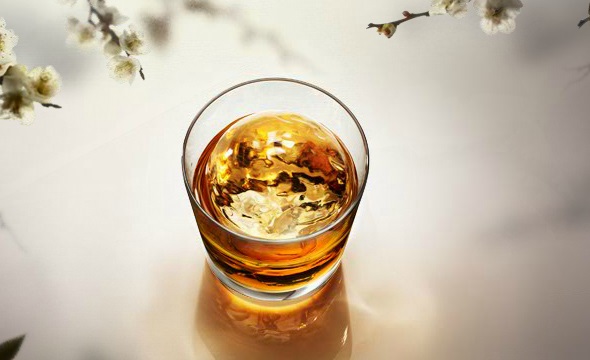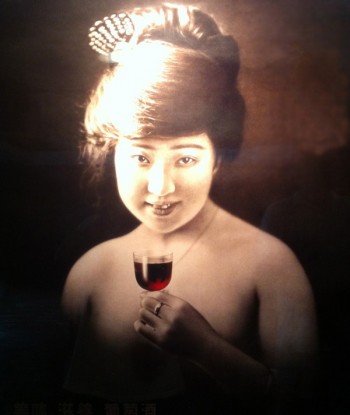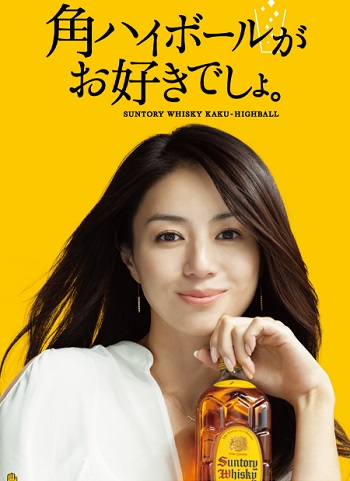This is part two of our ongoing series on Japanese Whisky. To get started, see part one.
Suntory. The one that started it all. The beverage company, not the man (we’ll get to him next week.) Suntory’s saga begins in 1899, when after seven years of apprenticeship for a liquor importer, a young Shinjiro Torii opens a small wine shop called Torii Shoten. It was planted in Osaka, the epicenter of industry and innovation in a nation striving to find its place among global superpowers with more than a century’s head start. This visible stage suited the enterprising Torii well, as he shared his love of imported wines with his contemporaries. He enjoyed some success, but encountered a rather predictable roadblock along the way: the Japanese customer just didn’t quite get it. Their palate for alcoholic beverages had been formed primarily by sake, a delicate rice wine that derives its subtleties from the degree to which the grain is milled. Thus, Torii found it difficult to evangelize the merits of big, rich foreign wines. It was a challenge, certainly, but one that he embraced as an opportunity.
After some experimentation with barrel aging and flavor extraction, and with the knowledge of sake blending he had gained during his apprenticeship, Torii’s wine shop became the staging ground for the production and release of Japan’s first fortified wine in 1907. It was called Akadama Port Wine, and it was sweet, light and an appealing ruby color. And in Torii’s mind, it was perfectly suited to the Japanese palate. His little wine shop, and the company that was born in it, grew over the next fifteen years into Kotobukiya Limited; his wine brand would blossom into a representation of Japanese ingenuity. Kotobukiya’s 1922 campaign ad — the first Japanese advertisement to use photography, as well as nude models, to market product — is a classic example of the modern thinking Suntory would embody. Today, sex and sophistication are at the helm of spirit branding, but this stirring advertisement was shocking to the sensibilities of the Japanese public. And it worked. It was just enough to get Japanese drinkers to try something new — and all this in the midst of a serious recession.
It was during this period that Shinjiro Torii built a relationship with a contemporary by the name of Masataka Taketsuru. Taketsuru had spent the better part of two years in Scotland on the dime of major liquor company, Settzu Shuzo, studying organic chemistry, Scotch malt and grain whisky production, distillation and blending. Upon his return to Japan in 1920, the romantic chemist found a different nation, and a different market. Japan had fallen into a recession, and his employer was less interested in pioneering expertly crafted whiskies than in turning quick profits from cheaply flavored and sweetened spirits with mass appeal. The disheartened Taketsuru resigned his post and his dreams of creating Japanese whisky. But then he met Torii, a man flush from his successes, and a pioneer willing to invest his assets in the talented Taketsuru. Together they set out to build the nation’s first whisky distillery.
The Yamazaki Distillery was born in 1923, a spring water fed distillery in the town of Shimamoto, just south of Tokyo in a vale at the foot of Mt. Tenno. Production began at the end of 1924, and after five long years their first whisky, Suntory Shirofuda, hit the national market in 1929. The whisky was considered a modest failure, and understandably so. The average Japanese consumer hadn’t yet acquired a taste for the peaty, Scotch-like flavor profile. As for the men behind it, sparse records still tell an interesting story. A disgruntled Taketsuru, who had been clashing with Torii for years over the intricacies of whisky production, was demoted to plant manager and eventually resigned from his position to pursue his own distillery.
Eight years later, Torii’s company released Suntory Kakubin (which marked the first use of the Suntory name). Packaged in a recognizable tortoiseshell bottle, it hit the market with resounding success. While Taketsuru’s Shirofuda whisky was probably very good, it was essentially whisky made by a Japanese man for Scotch drinkers. Conversely, Torii’s Kakubin whisky was whisky made by a Japanese man for Japanese drinkers. The distinction was important, and the marketplace responded accordingly.
Kakubin’s mass market release was timely, as a Japanese invasion of mainland China followed shortly thereafter. War has always been good to the spirits industry, and this was no exception. Both Yamazaki and Yoichi (the first of Taketsuru’s distilleries) would post what must have seemed astronomical net profits in the coming years. By the end of the war, whisky had become nationally recognized as the drink of choice for the cultured man. Fast forward through the reconstruction eras of the 40s and 50s, the economic boom of the 60s and 70s and a couple distilleries and vineyards later, and Suntory’s Hakushu distillery was built in 1973. Established in the forests of Mt. Kaikomagatake in the Japanese Southern Alps and fed by snowmelt and spring water from the Ojira river, this high altitude distillery brought something very valuable to the table: terroir. Until this point, Suntory had essentially been streamlined for mass production. Hakushu signaled that Suntory, along with Japan, was prepared to rise above muted blends aimed at satisfying the status quo and move into a new strata of precise, sophisticated whiskies that challenged the popular palate.
Shinjiro Torii had built a true marvel of an industry, and now his son Keizo Saji would use its resources to pursue the craft of whisky making. This is an important distinction; “industry” is the construction of a framework, tools and infrastructure which allow for streamlined perfection. Whereas “craft” is the daily pursuit of fine-tuning the intimate details that make the end product greater than the sum of its parts. Over the next twenty years, Suntory would release a series of smaller batch lines focused on perfecting the minutia which had previously been a romantic afterthought eschewed in favor of large scale production. Among the best of these whiskies are:
– Yamazaki, a lightly peated single malt distilled and aged at the flagship distillery and characterized by tropical fruits, stone fruits and gentle baking spices.
– Hakushu, a more liberally peated single malt from the eponymous distillery, characterized by alpine herbs, green fruits and a smoky finish
– Hibiki, a blended malt whisky with harmony found in the combination of yeasts, distillates, barrels and ages, characterized by red and dried fruits, floral notes and a rich mouthfeel.
I could tell you about how wonderful these spirits are (and I will, liberally, in following articles), but first it was important to convey the history and philosophy, the grit and the soul behind the spirits themselves. In the words of Shinji Fukuyo, Suntory’s current master blender, “whisky making takes time. We have to stay on the right path, and it’s important that we enhance our whiskies according to the year, water climate and of course our personalities.”
When industry and craft unite towards the perfection of a common goal, occasionally something special is created: art. And after more than a century of labor, Shinjiro Torii accomplished exactly that.
For more, see our introduction to Japanese Whisky.





